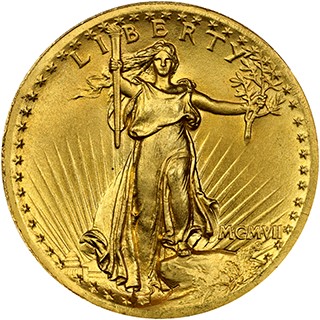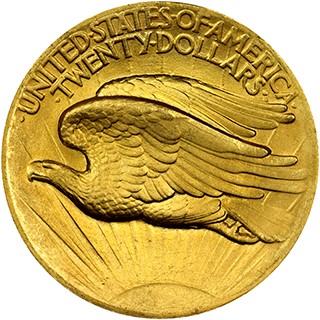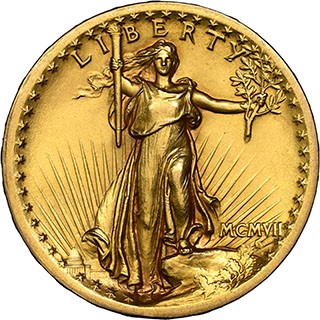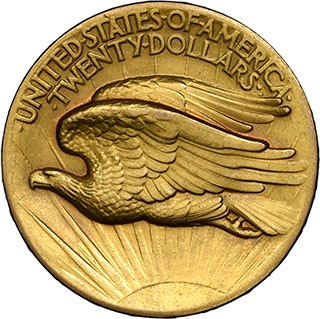Counterfeit Detection: 1907 High Relief Saint-Gaudens Double Eagle
Posted on 9/13/2022
Designed by Augustus Saint-Gaudens, the Double Eagle series that bears his name began in 1907. The initial coins had a date in Roman numerals and a high relief that proved impractical for mass production. The depiction of Liberty on the obverse is widely considered to be the most beautiful on a US gold coin, and the US Mint used it for its American Gold Eagle bullion coin series beginning in 1986.
A little over 12,000 1907 Double Eagles were reportedly struck in high relief, and the surviving examples are regarded as valuable rarities today. The genuine coin pictured here is graded NGC MS 66 and would be expected to sell for tens of thousands of dollars. The US Mint went on to strike about 361,000 more Doubles Eagles dated 1907 using dies that included a lower relief and Arabic numerals. These coins carry a much more modest numismatic premium.
NGC recently held a Grading Contest at the ANA World’s Fair of Money in the Chicago area. Participants were asked to determine the authenticity and grade of 15 coins. To make the contest more challenging, the NGC experts included a fake coin: this counterfeit 1907 High Relief Saint-Gaudens Double Eagle.
Though the coin has the correct weight and composition (90% gold), the texture of the surface is noticeably different from a genuine example. There are also pimples and bubbles on the fake, including on and below the eagle’s claw.
Erasing any doubt that this is a fake is the Omega symbol (Ω), which is embedded into the coin's design inside the eagle’s claw on the reverse. This identifies this coin as a counterfeit that was produced by the so-called “Omega Man” several decades ago. The counterfeiter (or counterfeiters) who produced this coin also created fakes of the Ten-Dollar Gold Eagle and Three-Dollar Gold denominations, hiding the Omega symbol in the 'R' within the word LIBERTY on the obverse. To learn more about one of these counterfeits, click here.
The Omega Man was never caught and remains an enigma today. They were responsible for creating thousands of fake coins, but they must have had considerable resources because the counterfeits are skillfully executed and made of gold. The fact that the counterfeiter “signed” their work with a symbol has caused a great deal of speculation about who made them — with the possibilities including an artistic genius and a hostile foreign government.
NGC is grateful to the ANA for making this counterfeit available for the Grading Contest. To see all the other coins that were part of the contest, click here.
Did you know? NGC has created a comprehensive Counterfeit Detection resource to help collectors and dealers identify counterfeit and altered coins. Visit NGCcoin.com/counterfeit.
Stay Informed
Want news like this delivered to your inbox once a month? Subscribe to the free NGC eNewsletter today!




